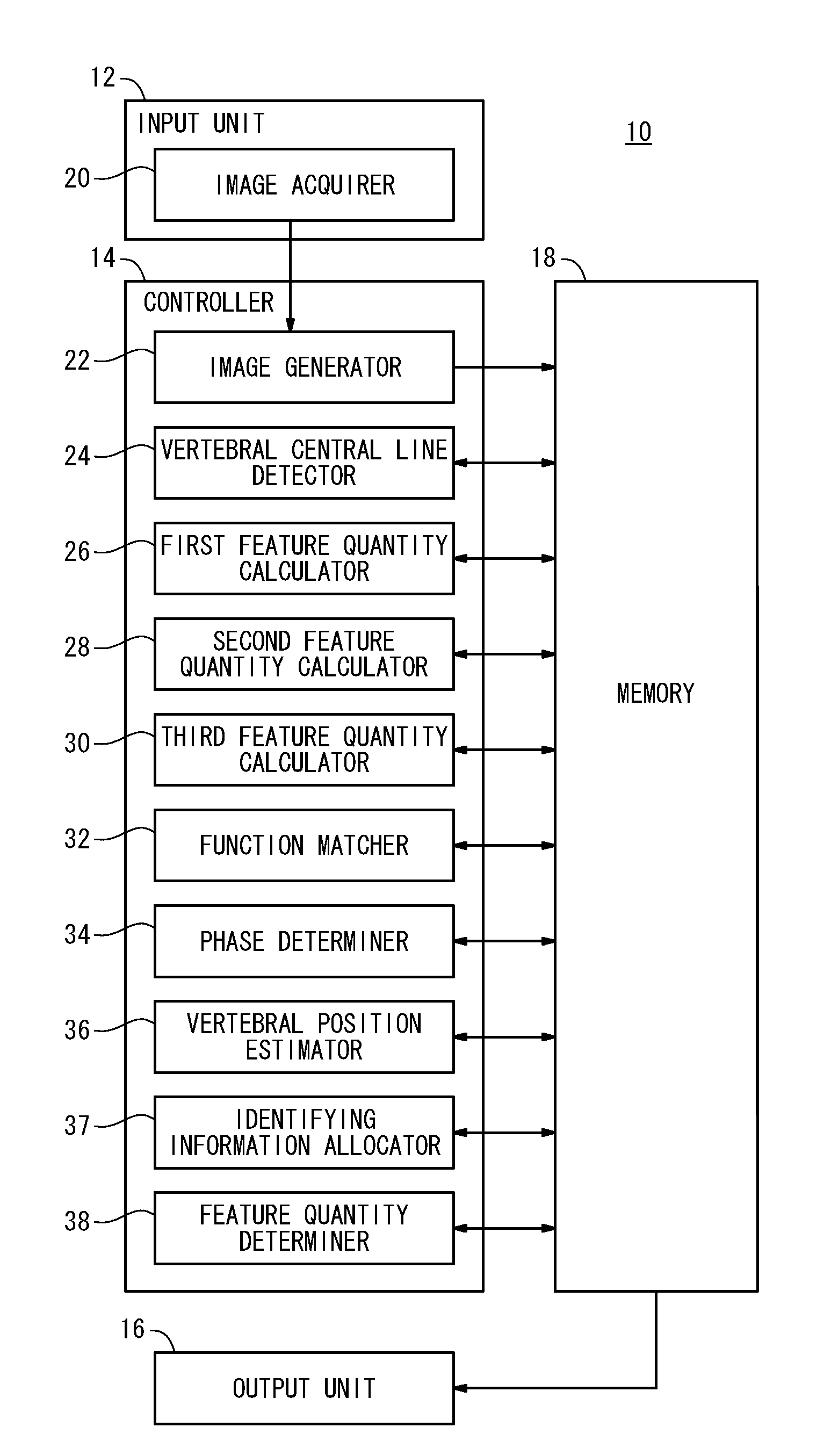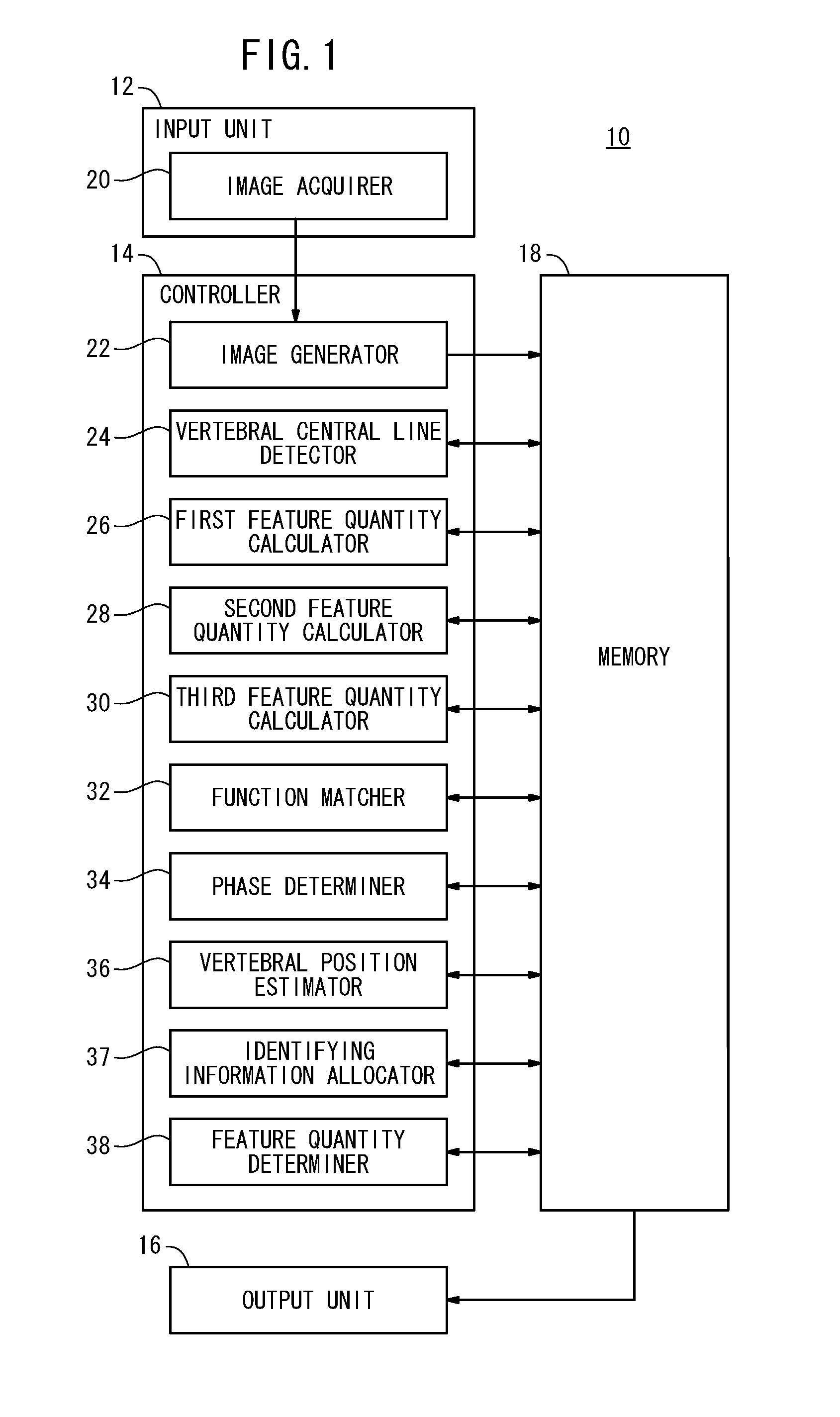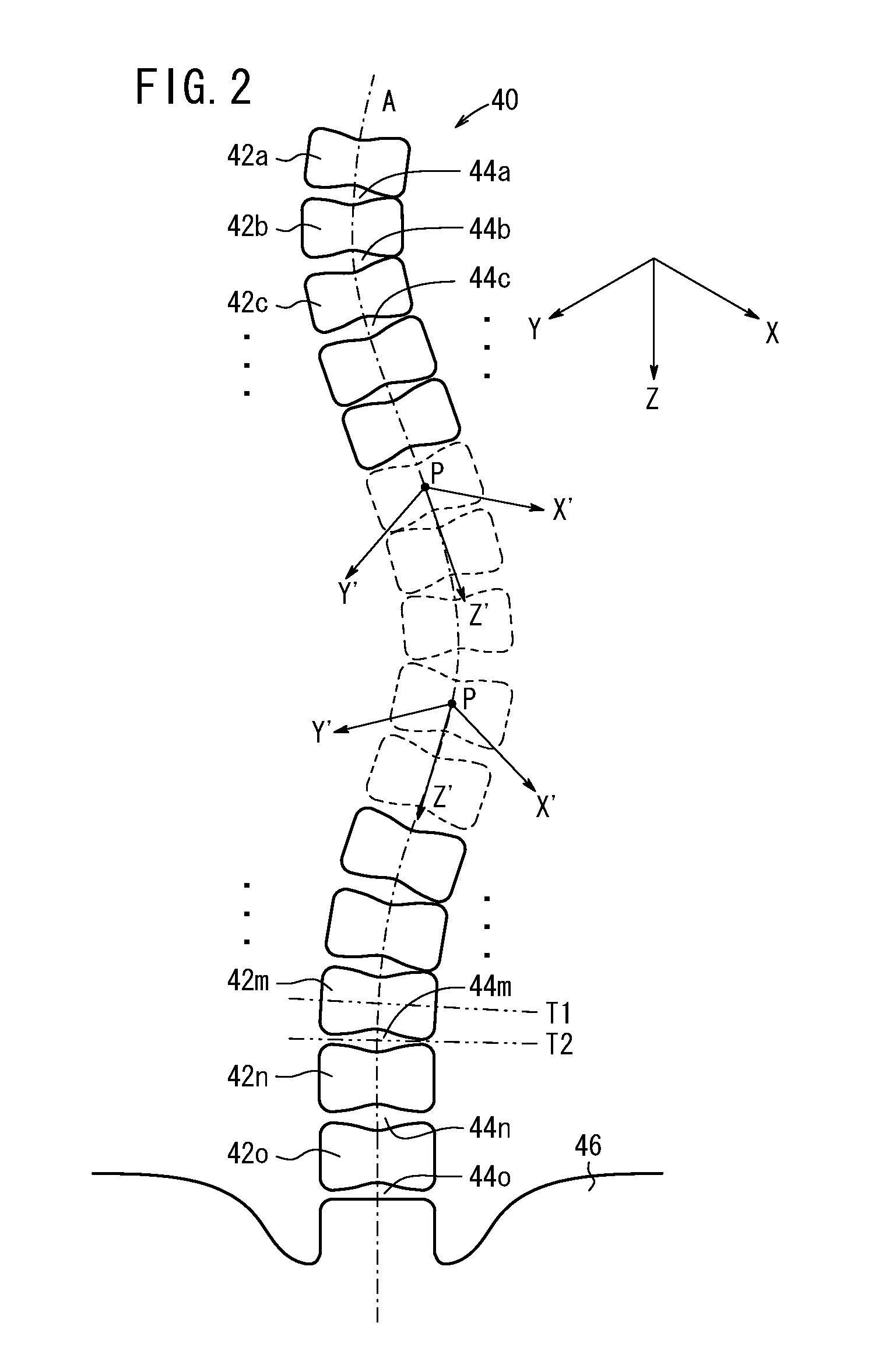Vertebra segmentation apparatus, vertebra segmentation method, and recording medium with program for vertebra segmentation
a segmentation apparatus and recording medium technology, applied in the field of vertebral segmentation methods, vertebral segmentation apparatuses, recording media with program for vertebral segmentation, can solve the problems of reducing image rendering capability, particularly difficult to render intervertebral discs and vertebral body endplates separately, etc., to reduce matching errors, high spatial frequency noise, and high accuracy
- Summary
- Abstract
- Description
- Claims
- Application Information
AI Technical Summary
Benefits of technology
Problems solved by technology
Method used
Image
Examples
Embodiment Construction
[0040]A vertebra segmentation method according to a preferred embodiment of the present invention, and a vertebra segmentation apparatus for carrying out the vertebra segmentation method will be described in detail below with reference to the drawings.
[0041]FIG. 1 is an electric block diagram of a vertebra segmentation apparatus 10 according to an embodiment of the present invention. As shown in FIG. 1, the vertebra segmentation apparatus 10 comprises an input unit 12, a controller 14 that serves as an information processor such as a CPU or the like, an output unit 16, and a memory 18 that serves as a recording medium. The memory 18 stores a program for carrying out functions of the vertebra segmentation apparatus 10. The input unit 12 receives signals from external circuits. The input unit 12 includes an image acquirer 20 for acquiring a three-dimensional medical image, which includes a plurality of vertebrae. The image acquirer 20 may acquire not only a medical image, such as a CT...
PUM
 Login to View More
Login to View More Abstract
Description
Claims
Application Information
 Login to View More
Login to View More - R&D
- Intellectual Property
- Life Sciences
- Materials
- Tech Scout
- Unparalleled Data Quality
- Higher Quality Content
- 60% Fewer Hallucinations
Browse by: Latest US Patents, China's latest patents, Technical Efficacy Thesaurus, Application Domain, Technology Topic, Popular Technical Reports.
© 2025 PatSnap. All rights reserved.Legal|Privacy policy|Modern Slavery Act Transparency Statement|Sitemap|About US| Contact US: help@patsnap.com



